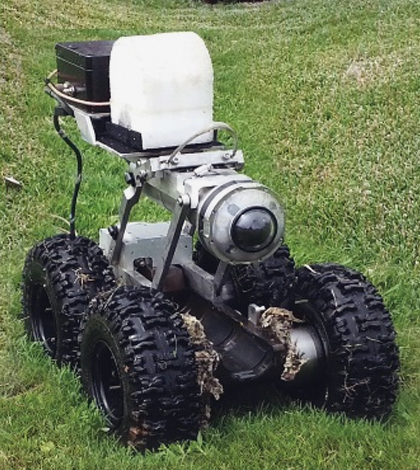Underground Radar Technology Aids Hurricane Katrina Recovery

Underground pipe inspection vehicle uses ultra-wide band pulsed radar technology to detect fractures, quantify corrosion and determine the presence of voids in the surrounding soil. (Credit: Louisiana Tech University)
Most of the damage caused by Hurricane Katrina has been cleaned up and fixed. But there are still unseen issues caused by the storm lurking underground. Lucky for one town, scientists at Louisiana Tech University have developed an underground radar technology system to spot where there are fixes that still need to be done.
The underground radar technology is being used in Slidell, La. to inspect buried pipelines, tunnels and culverts. It’s a pipe-penetrating scanning system based on ultra-wide band pulsed radar. The technology incorporates simulation, electronics, robotics, signal processing and three-dimensional renderings in a package mounted on a pipe-inspection vehicle.
The rover easily goes underground into pipes and other structures to gauge their stability and if there are surrounding issues that need to be addressed. Features of interest include fractures, corrosion and the presence of voids in the surrounding soil caused by stormwater leaks and flooding.
Louisiana Tech researchers first began using the underground radar technology in the city in 2013, after successful tests elsewhere. As had been predicted by the group in their initial research, compromised infrastructure was able to be seen. Most importantly, though, it was provable.
The data collected helped the City of Slidell in its work to secure $75 million in funding from the Federal Emergency Management Agency for streets, drainage and sewer improvements.
Top image: Underground pipe inspection vehicle uses ultra-wide band pulsed radar technology to detect fractures, quantify corrosion and determine the presence of voids in the surrounding soil. (Credit: Louisiana Tech University)




0 comments